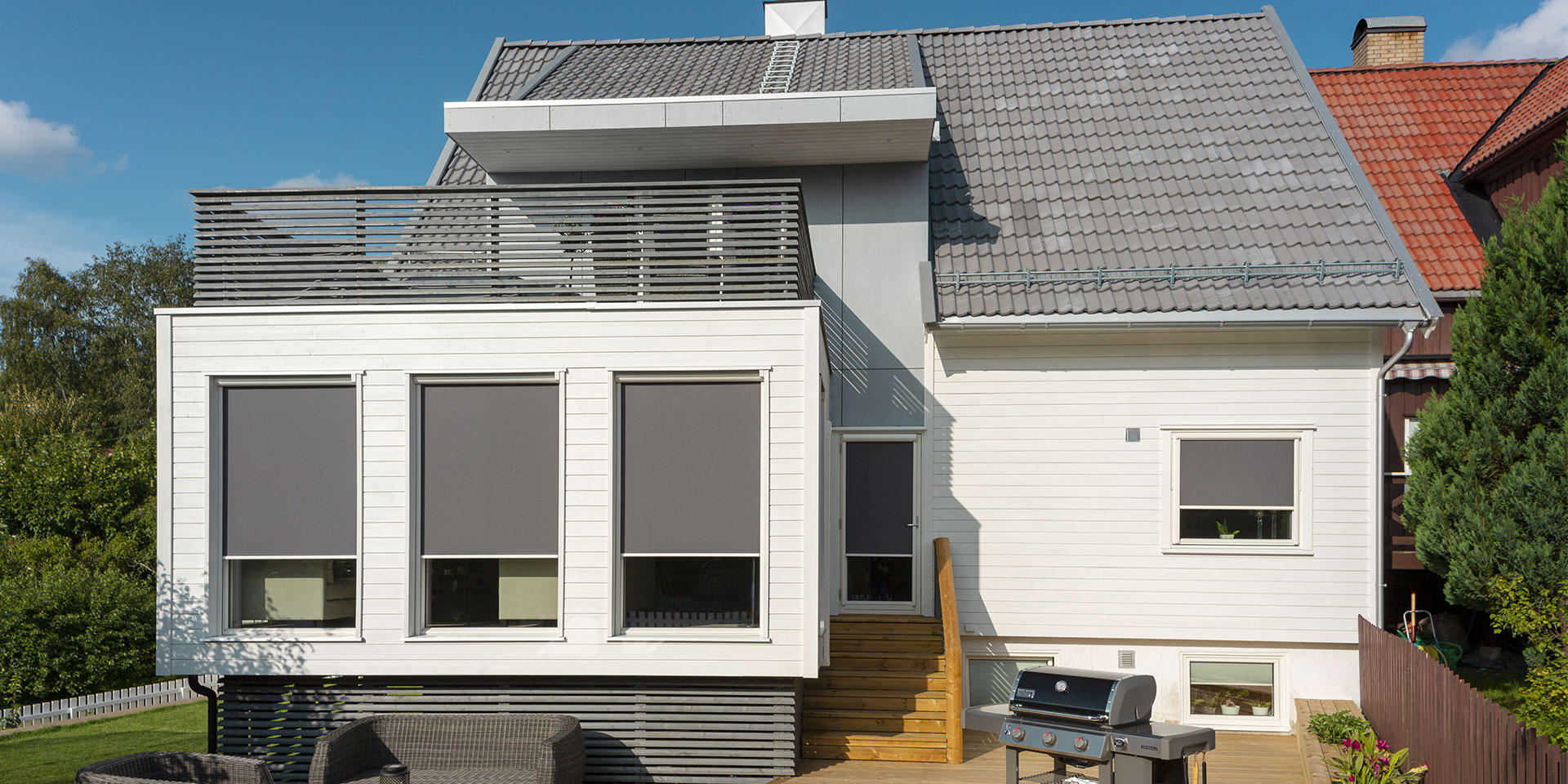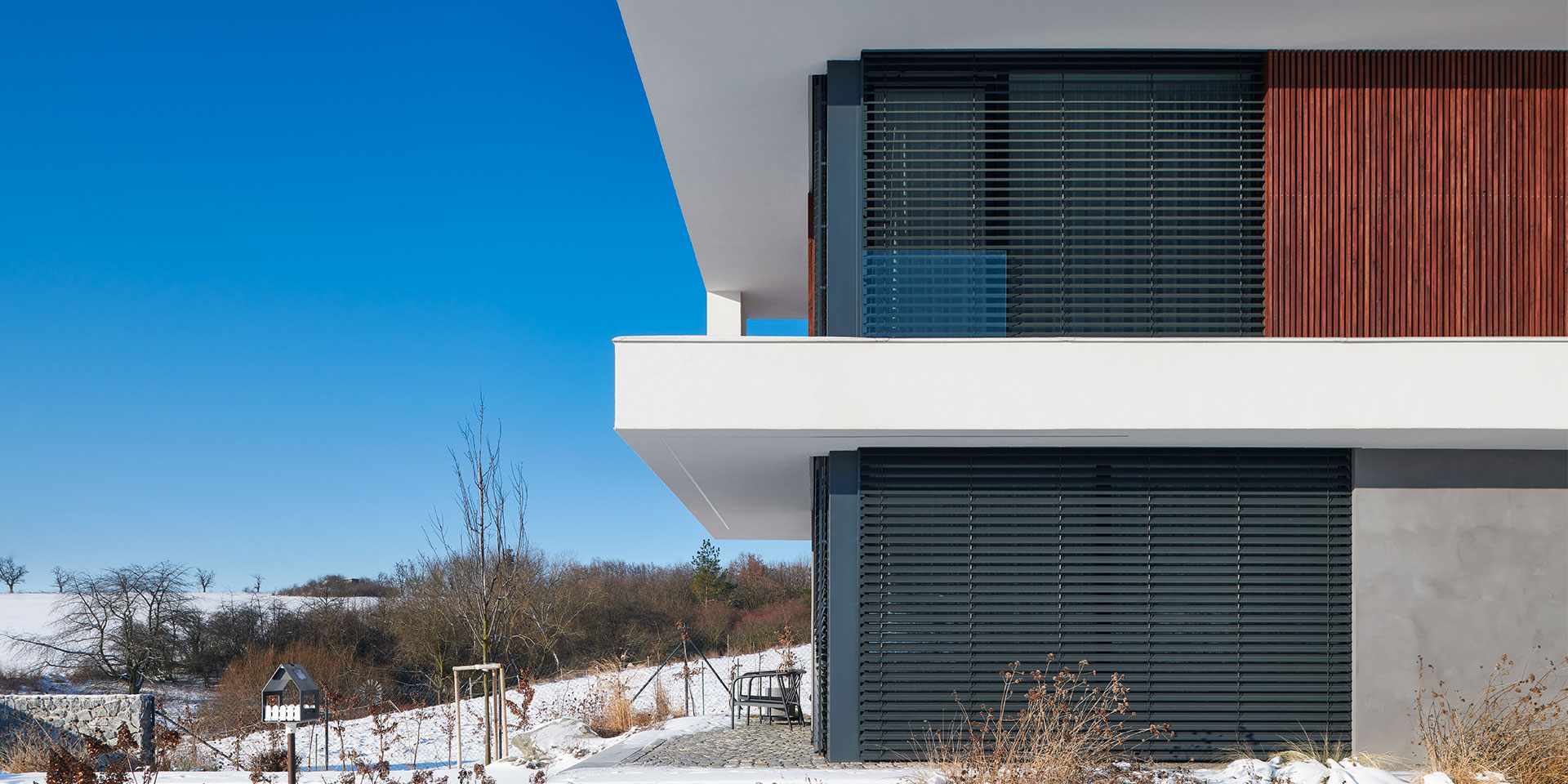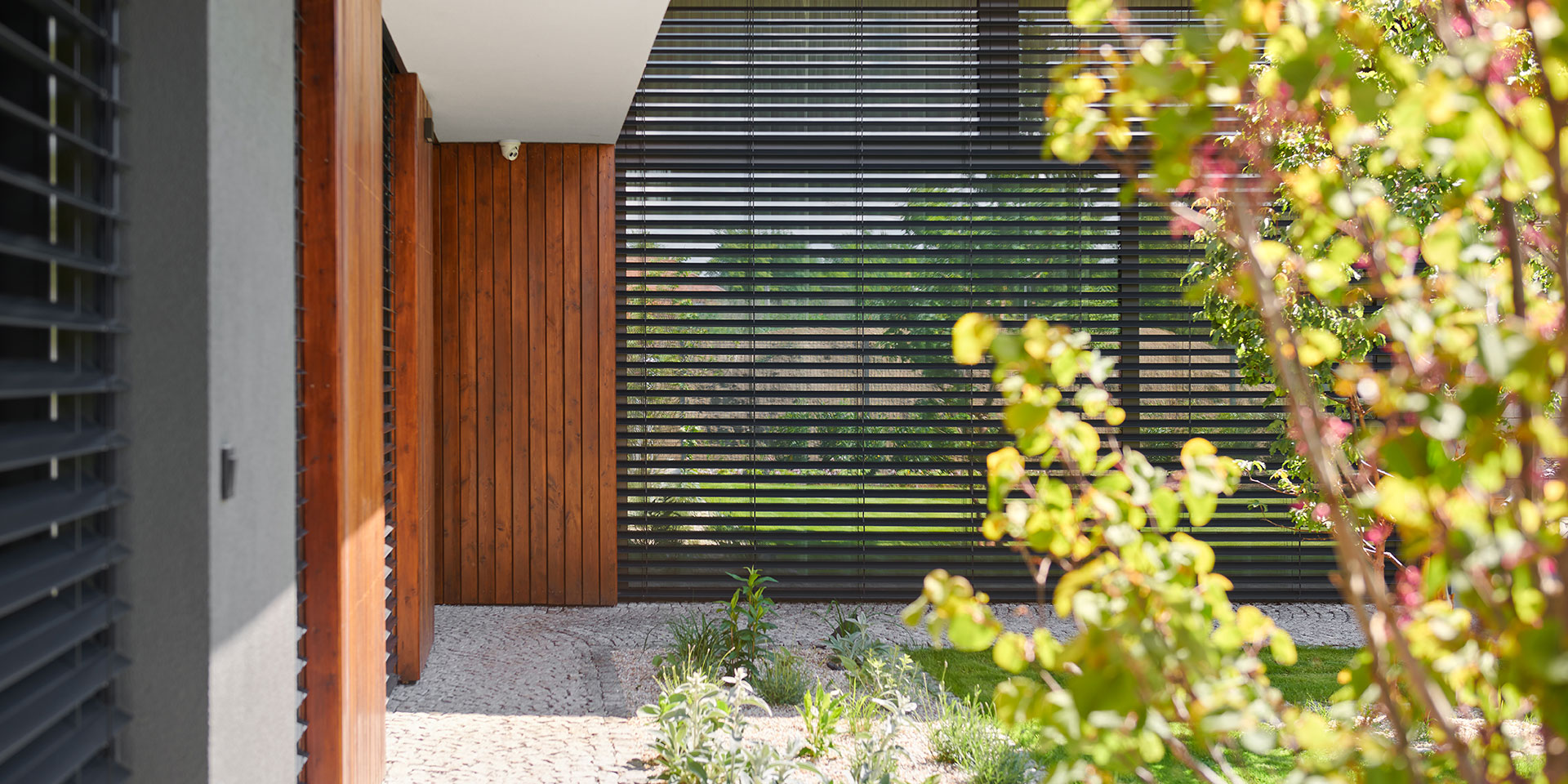What involves construction preparation for external shading
If you are considering external blinds or roller shutters but are not sure if they will work on your house or what you need to prepare, this article is for you. In an ideal scenario, the house will undergo what is known as construction preparation ahead of time to allow the external shading components to be neatly incorporated into the façade. However, external blinds or roller shutters can also be installed afterwards — without prior construction preparation.
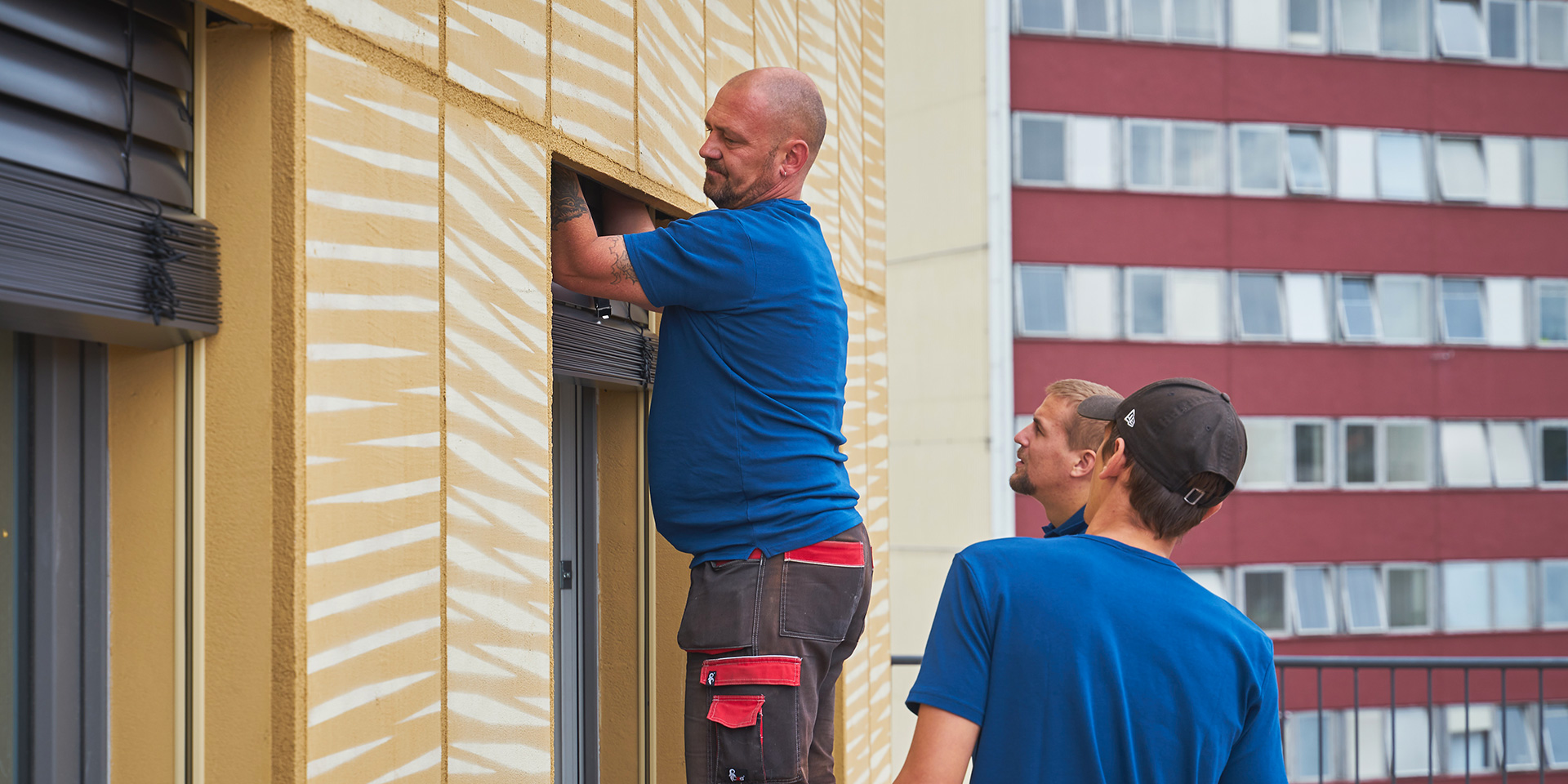
Why is construction preparation even an issue
Thanks to good construction preparation, external shading can be elegantly hidden under the façade, where neither the cover box (so-called KASTL) nor the guide rails are visible. In addition, the wiring outlet for the motor is handled in advance, so there is no need for additional drilling and cutting into the wall.
In practice, this means that on the building carcase, before the façade is applied, the installation company measures the window openings and, based on the dimensions, orders the shading components for production — in the case of external blinds, the box and the casings for the guide rails. At the same time, the construction company or electrician will prepare the cable for the blinds or goosenecks for the roller shutters.
Once the components are manufactured:
- The installation company goes to the site and anchors the box and the casings for the guide rails into the masonry.
- The construction company goes to work on the insulation, the façade and the components.
- The installation company installs the external shading and hooks up the motors, which ironically is the easiest of all.
From the context it is clear that you can carry out construction preparation for new buildings or for general house renovations when you provide the house with thermal insulation.
Please note that construction preparation and measuring is the key and most challenging part of installing external shading. Millimetres play a role here, and walls are not perfectly straight — building openings can be offset, converge and the like. A good installation company can deal with these situations and knows what dimensions to pass on to the factory, or if the construction company needs to carry out additional modifications.
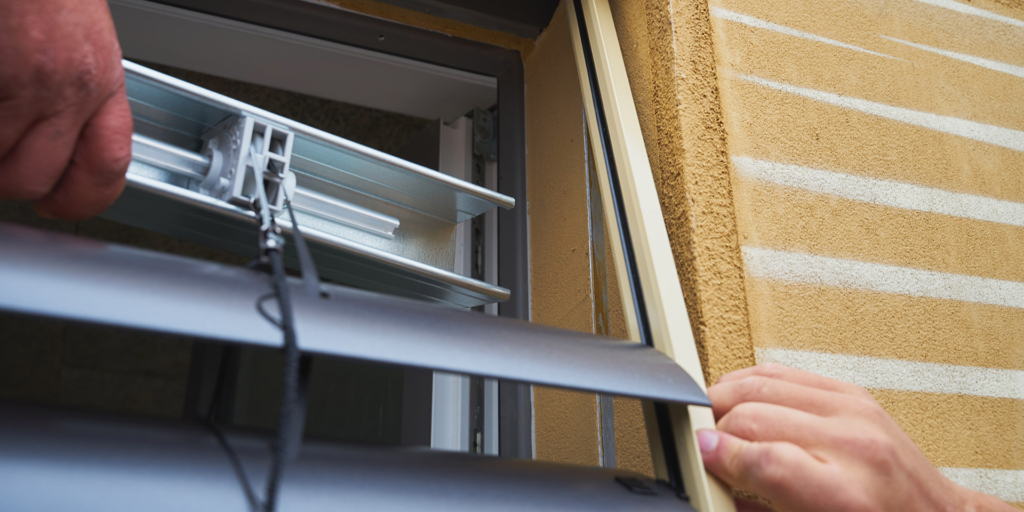
Situations where construction preparation does not take place
Some customers want to install external shading under the plaster even if no construction preparation has been made on their house. In theory, this is possible, but in practice there are not many such cases.
The situation is most complicated by the under-façade box for external blinds, which is 16 cm deep and needs to be covered with at least a 2 cm layer of façade. So, to get this box inside the finished façade, you need the façade on your house to be at least 18 cm deep. And that is not common.
If you meet this condition, also consider that during installation the company must drill into the masonry and façade (and literally cut a hole in the façade above the window because of the box), which can compromise the insulation of the house. In addition, some older façades crumble a lot and any major intervention is risky.
For these reasons, flush mounting in finished buildings is complicated (often impossible) so be sure to consult the building company, installation company, or shading manufacturer about it thoroughly. And if you don’t succeed, that’s okay — you still don’t have to give up on external shading.
Solution for all buildings: visible installation
In most cases, if the construction is not suitably prepared and the shading cannot be installed under the façade for technical reasons, you can install external shading afterwards by means of so-called visible installation. In these cases, the box and the guide rails are installed on the finished construction and anchored via holders to the window frame, the jamb or from the front into the façade using special anchors.
Although the box and the guide rails are visible (they are not buried in the façade), this solution on the other hand is cheaper and can be used on the vast majority of buildings with no construction preparation. Just take into account that you will slightly reduce the clearance of the window when installing it in the construction opening.
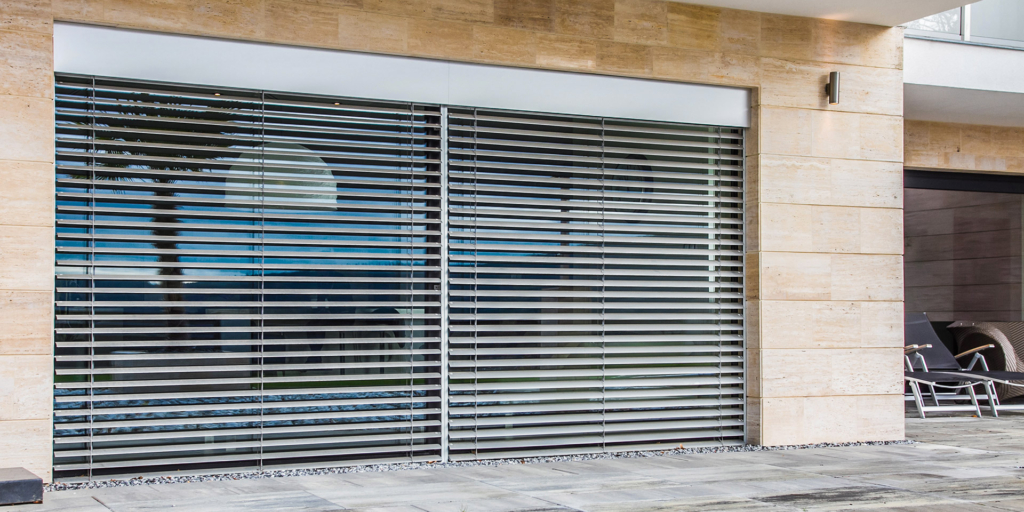
If you have any questions about construction preparation or installation of external shading, please contact one of our sales representatives.

